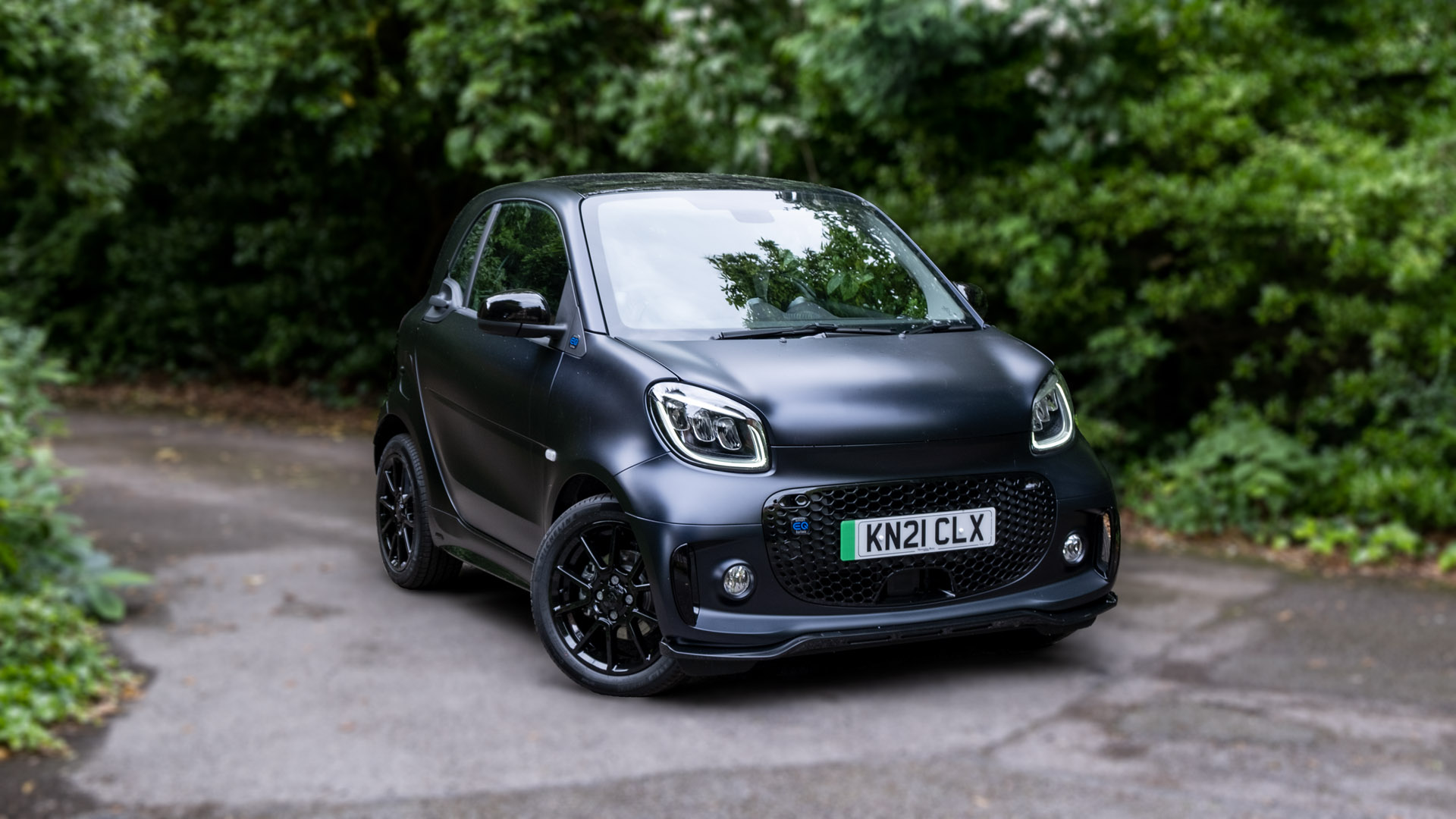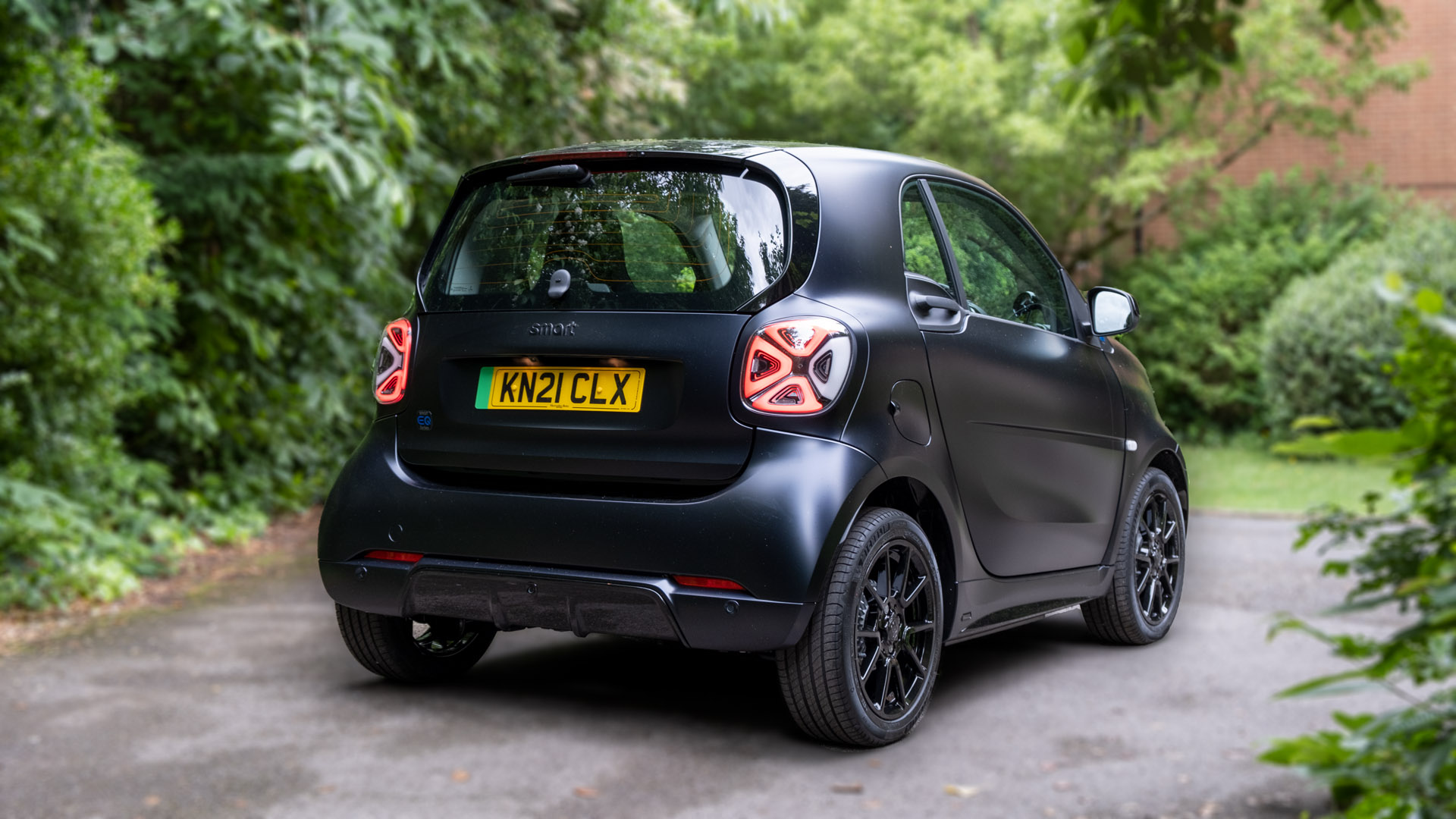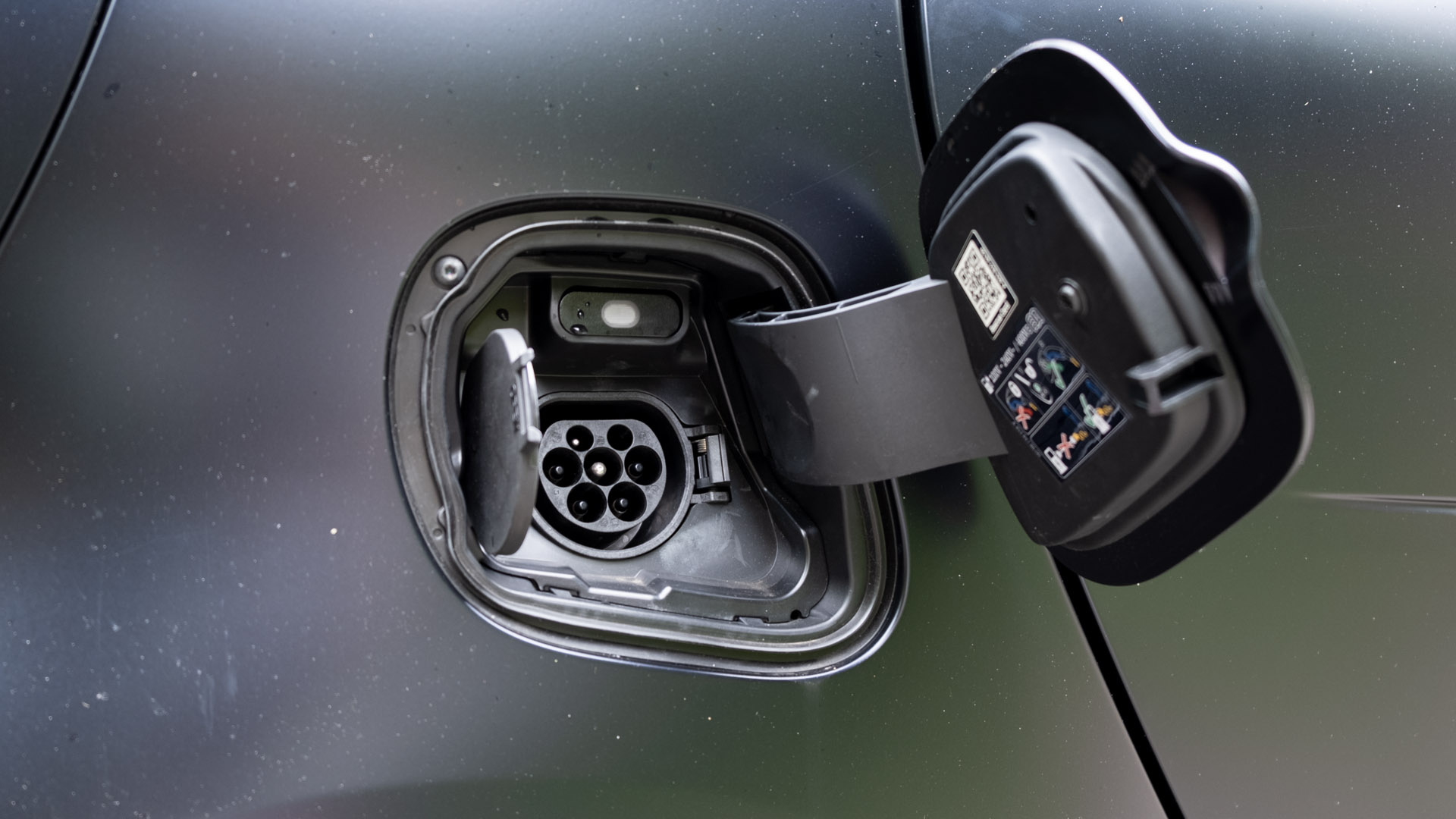Smart EQ Fortwo review (2023): The best city car? – TotallyEV
In the late 90s, Smart, the German automotive brand and division of Daimler AG – better known in the consumer space for Mercedes-Benz Cars – came out with a microcar, which took the market by storm. The first-generation model was indeed a success, namely for consumers living in metropolitan cities, where finding a parking space was and still is deemed a luxury.
Much has changed over the years and now in its third generation, the Smart car is offered solely as a fully electric vehicle. This triggered a rebrand in 2018, where the company took Mercedes-Benz’s ‘EQ’ branding to denote an electrified powertrain.
If you’d prefer to watch a review of the Smart EQ Fortwo, head on over to our YouTube channel.
Smart EQ Fortwo price & competition
At the time of writing, the Smart EQ is available in a two-door configuration, named the Fortwo Coupé; a two-door cabriolet, the Fortwo Cabrio; and a four-door coupe, the Forfour. The latter model is available in the ‘Premium’ and ‘Exclusive’ trims, while the Fortwo Cabrio is also available in the ‘Brabus’ line, and the Fortwo Coupé can also be found in the top-spec ‘Edition Bluedawn’ trim, which we have on review.
All trim levels feature the same 60 kW (82hp) electric motor and 17.6 kWh (17.2 kWh usable) battery pack that give the car a claimed range of 77-81 miles on a single charge.
Find the best Smart EQ Fortwo deals on LeaseLoco
As standard, the ‘premium’ trim comes with the following options:
- 16″ 5-twin-spoke design alloy wheels
- 85˚ wide-opening doors
- H4 halogen headlamps with integrated LED daytime driving lights
- Panoramic roof with sunblind (excluding Cabrio)
- Electric mirrors
- Height adjustable driver’s seat
- Retainer belt on the passenger seat
- 8″ infotainment system with Android Auto and Apple CarPlay
- 3.5″ instrument cluster with a physical dial for the speedometer
- 2-speaker audio system (four in the Forfour)
- Rearview camera and sensors
The ‘Premium’ trim costs £19,200 for the Coupé, £21,620 for the Cabrio and £19,795 for the Forfour.

Move up to the ‘exclusive’ trim and you get the following added on top:
- 16″ 8-Y-spoke design alloy wheels
- Front fog lamps with cornering light function
- Full-LED headlamps with main & dipped beam plus integral indicator & daytime running lights
- Rain/light sensor
- Automatically dimming interior mirror
- Interior ambient lighting
- Velour floor mats in black
- Seats with upholstery in black leather with grey double stitching
The ‘Exclusive’ trim costs £20,350 for the Coupé, £22,770 for the Cabrio and £20,945 for the Forfour.
Read next: A list of our favourite phone holders
Move up to the Brabus line, and you get a few extra aesthetic differences:
- 16″ Brabus Monoblock XI design alloy wheels
- Aluminium Brabus sport pedals
- Aluminium handbrake and side sills
- Brabus black velour floor mats and gear knob
- Carbon-fibre look trim
- Upholstery in black fabric with double-stitching in white
The ‘Brabus’ trim costs £21,495 for the Coupé, and £23,770 for the Cabrio.

Finally, the ‘Edition Bluedawn’ adds some extra sport flair to the Brabus Coupé, and comes at a £1,000 premium:
- The air intake trim, front spoiler, side sills with accent trim, door mirror caps, rear apron, the front and rear Smart logos are all painted in a high-gloss black colour
- A sapphire blue matte paint finish is also exclusive to this model
When it comes to its competitors, there are a few compact EVs to consider: the sporty BMW i3 from £33,805; the spacious Renault Zoe starts from £27,495; the tech-focused Honda e at £28,215; the stylish Mini Electric at £26,000; the bite-sized Volkswagen e-up! starts from £23,555 with its near-identical sibling, the Seat Mii Electric, coming in at £20,300; and the Fiat 500 Electric that starts from £20,495. There’s also the single-seater Renault Twizy at £11,995, although, we wouldn’t pit that in the same league as the aforementioned vehicles.
Read next: Seat Mii Electric review: Best budget electric car?
Smart EQ Fortwo exterior review
While its competitors offer small vehicles, in our opinion, only the Renault and the Smart can truly be considered microcars. Unlike the Renault Twizy, however, the Smart EQ Fortwo has an elegant design that’s reminiscent of its first-generation sibling.
Indeed, its short-style curved bonnet is met with stylish headlights and a rather large-sized front grille that both give the vehicle a smart look – pun intended. At the rear, a flat cut-off boot and stylish taillights provide the vehicle with a familiar design.
If you opt for the Brabus or Edition Bluedawn models, you’ll get a more aggressive look, namely the latter model that adds some extra detailing around the two bumpers and the sideskirts. While these design implementations do add some extra pizzazz, we suspect many will opt for the Premium trim instead, as the Brabus and Edition Bluedawn models are £1,145 and £2,145 dearer, respectively.
of 7
No matter which trim you choose, there’s no denying that the vehicle’s size is unique, where its compact form factor sets itself aside from the likes of the Seat Mii Electric, VW e-up! and the slightly bigger BMW i3, to name just a few. It’s 2,695mm long, 1,663mm wide, 1,555mm tall and weighs in at 1,095kg, which makes it easy to weave between traffic and of course, park in tight spaces.
Read next: Volkswagen e-up! review: A bite-sized electric car
Smart EQ Fortwo interior review
Given its compact size, one might assume it’s hard to get in and out of the vehicle or to make yourself feel comfortable. We’ll touch on comfort further down in this review, but focusing on the ease of access, the Smart EQ Fortwo is among the very best on the market. Thanks to its surprisingly large-sized doors that open up at an 85˚ angle, it makes it a breeze to hop in and out of the vehicle and dare we say it, transport goods.
of 3
Within the cabin, the compact city car sets itself aside from a few of its budget counterparts, as it includes an 8″ infotainment system that supports Android Auto and Apple CarPlay. Indeed, the touchscreen display planted at the centre of the dashboard is intuitive and is also used to display the rearview camera. Oddly, built-in maps for navigation weren’t a feature in our tested model but thankfully, Google Maps via Android Auto worked a treat.
of 4
Read next: The best dash cams to mount inside your vehicle
To connect up to the infotainment system, there are two USB ports found under the retractable cover by the centre console. Here, you’ll also find a 3.5mm auxiliary port and two cupholders. The former is a rarity in modern cars, but will certainly be appreciated by those who still have an iPod or a DAP – of course, you can also use the USB ports to playback audio digitally via one of the aforementioned automotive operating systems. On that note, the Smart EQ Fortwo houses two speakers only. Sonically, these aren’t impressive, but if you’d like to hear how the system sounds, head on over to our YouTube channel.
of 2
On the subject of technology, the car has a semi-digitalized instrument cluster, where it has a 3.5″ display and a physical dial for the speedometer. The small display is easily adjustable via the physical buttons found on the steering wheel.
Elsewhere, there’s a small gauge located toward the driver’s side door that shows the power draw and the remaining battery percentage. This small inclusion reminds us of custom-modded street cars with their nitrous oxide gauges – it’s pretty cool. On a more sensible note, there are physical climate control buttons, which are much appreciated over capacitative buttons or sliders.
Read next: MG ZS EV review: An affordable all-electric SUV
Smart EQ Fortwo storage review
Undoubtedly, one of its weaknesses is the lack of storage space. Within the cabin, there’s a non-slip bay under the handbrake that allows you to store a smartphone, the door bins will fit a 500ml bottle and a small-sized purse or wallet, and the compact glove compartment helps stow away valuables from prying eyes.
To aid in transporting goods, the automaker has integrated a stretchable retainer belt that resides on the passenger seat. This allows the driver to conveniently take a bag, as it won’t flail around in the cabin nor have to be placed in the boot. Note, however, when the retainer is used, you won’t be able to take a passenger with you.
of 5
Onto the boot, there’s 260 litres of usable space, which given its compact size is pretty impressive. Here’s how it stacks up to its all-electric rivals: Nissan Leaf (435/1,161 litres); Hyundai Ioniq Electric (357 /1,417 litres); VW ID.3 (385/1,267 litres); Renault Zoe (338/1,225 litres); Corsa-e (267/1,076 litres); VW e-up! (251/951 litres); Seat Mii Electric (251/923 litres); Mini Electric (211/731); Honda e (171/571 litres); Fiat 500 Electric (185/550 litres).
All of its competitors offer four seats, and as such we have quoted figures with the seats in place and folded flat. In the Smart EQ Fortwo, only the front passenger seat can be dropped down to reveal more space. The automaker hasn’t shared its official figure, but we suspect it will add roughly 100 litres of extra space.
of 8
Elsewhere, there’s a handy divider between the front and rear seats, which doubles up as a retractable boot cover. Furthermore, if you’d like to conceal the car’s charging cable, you can loop one within the small compartment found within the boot door.
Read next: Renault Zoe review: Best electric family car?
Smart EQ Fortwo comfort review
As it might already be obvious, the Fortwo only seats two people within the cabin. Despite its compact size, the cabin is spacious and the seats have got a good degree of firmness. Indeed, it might come as a surprise, but 6-foot 2-inches (188cm) individuals won’t feel henned in, and with both seats having the ability to slide back or forth, one can find a comfortable seating distance. Both seats are heated, too. The driver’s seat is also height-adjustable, meaning one can lower it to feel closer to the road.
of 5
Find the best Smart EQ Fortwo deals on LeaseLoco
The biggest issue we have with comfort is the inherent lack of cabin insulation. Be it at a standstill or on the road, the Smart EQ Fortwo fails to isolate exterior noise. The issue amplifies when driving around town or on the motorway, where given the vehicle’s plastic door panels, it also allows for a slight reverb to creep into the cabin. It’s not overly distracting, but the cabins of the VW e-up! and Seat Mii Electric don’t duffer from said issue, while the Honda e and Fiat 500 Electric’s cabins are superior still.
Read next: Honda e review: A tech-tastic electric car
Smart EQ Fortwo performance review
The same could be said about the Smart EQ Fortwo’s suspension setup which is slightly stiffer than some of its counterparts, namely those from the Volkswagen Group. Here, when going over potholes and speed bumps, you’ll not only feel it, but you’ll also hear it due to the vehicle’s poor cabin insulation.
Nonetheless, its compact size and shape do make it easy to manoeuvre, especially around tight corners and parking lots – it has a turning circle of 6.95m. It’s also plenty of fun to whizz around town, as its single motor dispatches 60 kW (82hp) of power and 160 Nm of torque. While that might not seem like much, it’ll still incite plenty of joy – we had it tested using Racelogic’s Vbox Sport and achieved 60mph from a standstill in 10.15 seconds. As for top speed, it’s limited to 81mph. By comparison, however, the Honda e achieves this feat in 7.83s from its motor, which outputs 113 kW (151 hp) of power, 315 Nm of torque and a top speed of 90mph.
of 3
The car’s biggest sticking point is its all-electric range, which is claimed to sit between 77-81 miles depending on the model you choose. In our mixed driving tests, we found the Coupé managed 70-75 miles on a single charge. While it’s marketed as a city car, it’s hard to ignore its competitors, such as the VW e-up!, Seat Mii Electric and the Fiat 500 Electric, which are all able to achieve north of 140 miles.
The Smart EQ Fortwo’s limited mileage is down to the vehicle’s small 17.2 kWh battery pack. Most of its competitors offer double the capacity, and unsurprisingly this is reflected in our driving range tests.
Read next: Our favourite power banks for long journeys
When it comes to recouping energy back into the battery pack, the vehicle has a clever way of sensing the vehicle in front of you and appropriately slowing down the car when you lift off the accelerator pedal, if there’s no object in front, the system will let you coast. If, however, you prefer a slightly more direct approach, you can enable Eco mode via a button found on the centre console – this will provide a slight harsher degree of regenerative braking. Still, in either mode, it’s not harsh enough to drive with one pedal only, meaning you’ll have to resort to using the brake pedal frequently.

If you want to recharge at a rapid rate, its Type 2 port supports up to 22 kW of input. Here, it’ll take 40 mins to go from 10-80% on a fast charger. Plug it into a 7 kW wallbox or public charger and it’ll take 3hrs 18mins, while a 3-pin wall socket takes 8hrs 30mins. One can understand why the automaker didn’t integrate a faster CCS charging port, but we would have hoped to see it featured for those who don’t want to wait around at a charging point.
Read next: MG5 EV review: The affordable fully electric estate
Smart EQ Fortwo safety review
As for safety, the newer Smart car hasn’t been tested by Euro NCAP. However, back in 2014, the 2-door hatchback achieved an impressive 4/5 stars. There’s a misconception about small-sized vehicles, as many associate a small crumple zone with a lack of safety credentials; in reality, it’s down to the rigidity of the chassis and here is where the old Smart car excelled. So, while the Smart EQ Fortwo hasn’t been tested by the safety experts, but one could assume it’ll achieve a similar result.
of 2
In terms of driver assistance systems, they’re pretty basic. There’s cruise control and Active Brake Assist (forward-collision warning system with autonomous braking intervention), only. There’s no means of adding a blind spot monitoring system, rear cross-traffic alert, adaptive cruise control nor lane keep assistance. On the plus side, all models come with a rearview camera and sensors as standard, making it even easier to park the car in a tight space.
Read next: Kia e-Niro review: The best all-electric SUV?
TotallyEV’s verdict on the Smart EQ Fortwo
Ultimately, the Smart EQ Fortwo is a compact all-electric city car that lives up to the billing – it’s stylish and reminiscent of its predecessors, fun to drive and easy to park. However, is having a microcar worth it when it comes to a fully electric vehicle?
Find the best Smart EQ Fortwo deals on LeaseLoco
At the time of writing, manufacturers are limited by battery technology, which means there are only so many cells automakers can place in an EV. The Smart car is a prime example of this limiting factor, and as such achieves half the range of its slightly larger competitors. Given the car’s asking price, we can’t see ourselves recommending it over the likes of the VW e-up!, Seat Mii Electric or the Fiat 500 Electric, which all come in at roughly the same price.
Granted, the Smart EQ Fortwo has a unique selling point, but it’s still hard to think of many consumers that would trade an ultra-compact vehicle for one that achieves double the driving range. Of course, that’s our opinion and verdict of the car, so we’d love to hear your thoughts in the comments section below or via social media – we’re on: YouTube, Instagram, Facebook, Twitter and LinkedIn.















![Toni Kroos là ai? [ sự thật về tiểu sử đầy đủ Toni Kroos ]](https://evbn.org/wp-content/uploads/New-Project-6635-1671934592.jpg)


